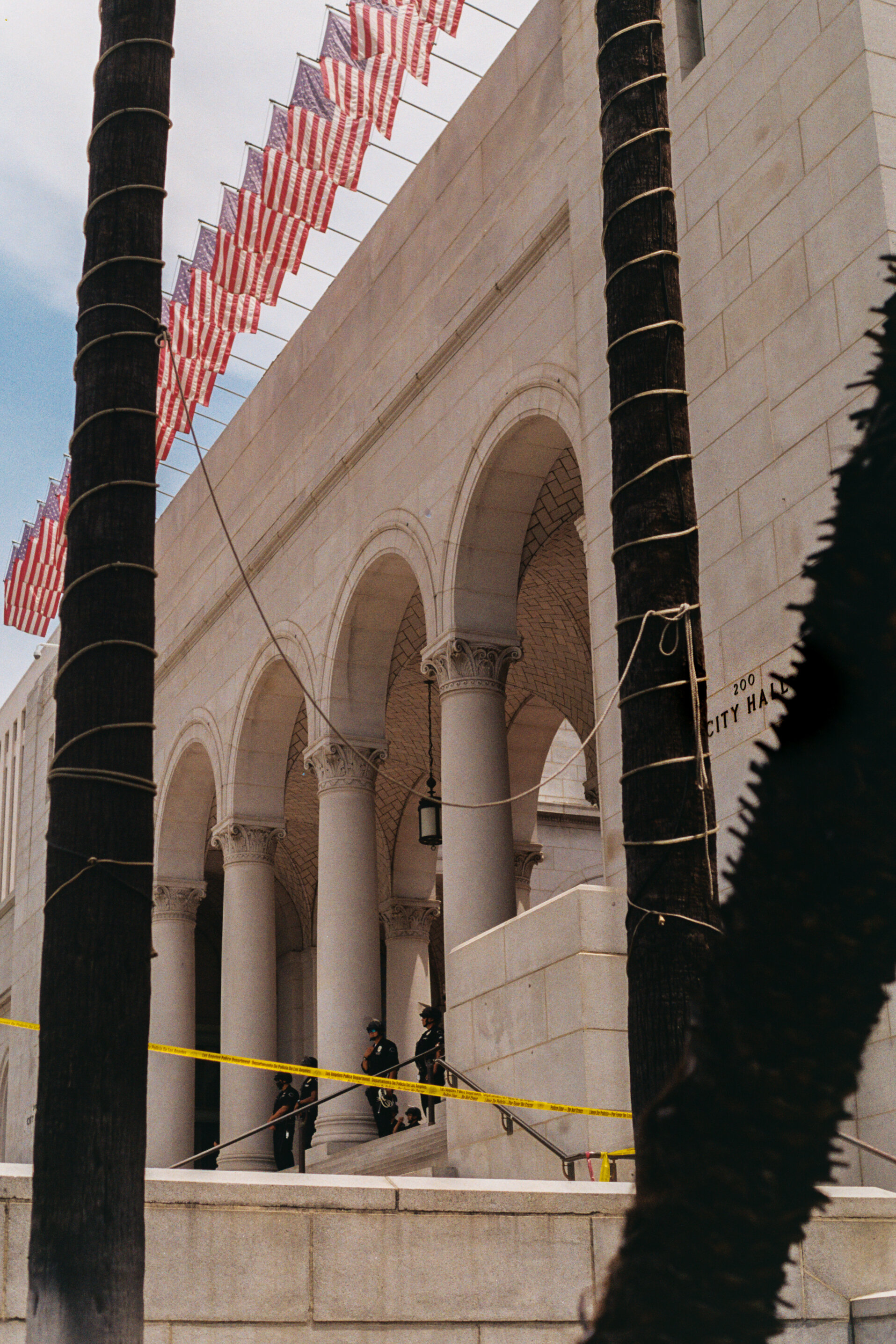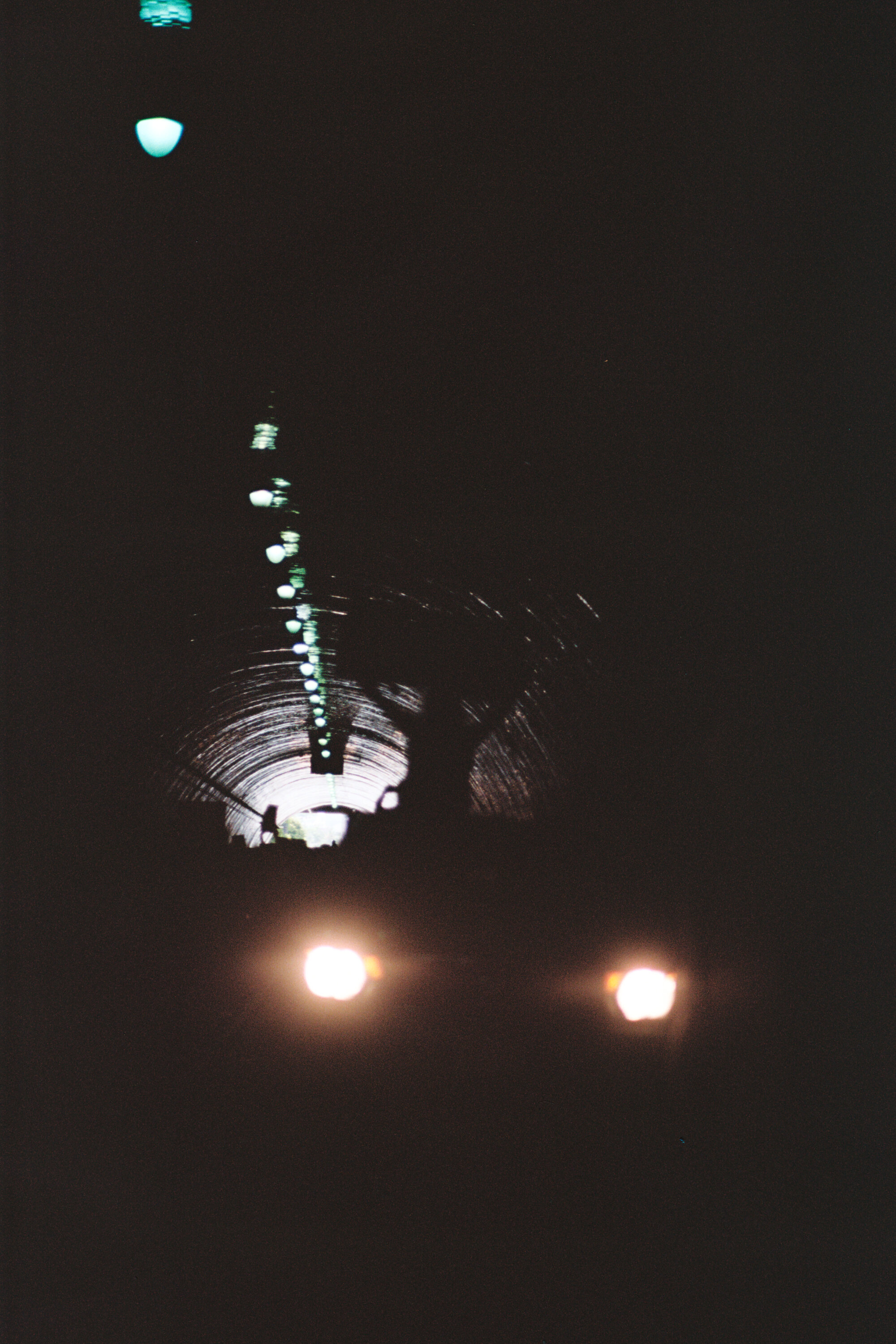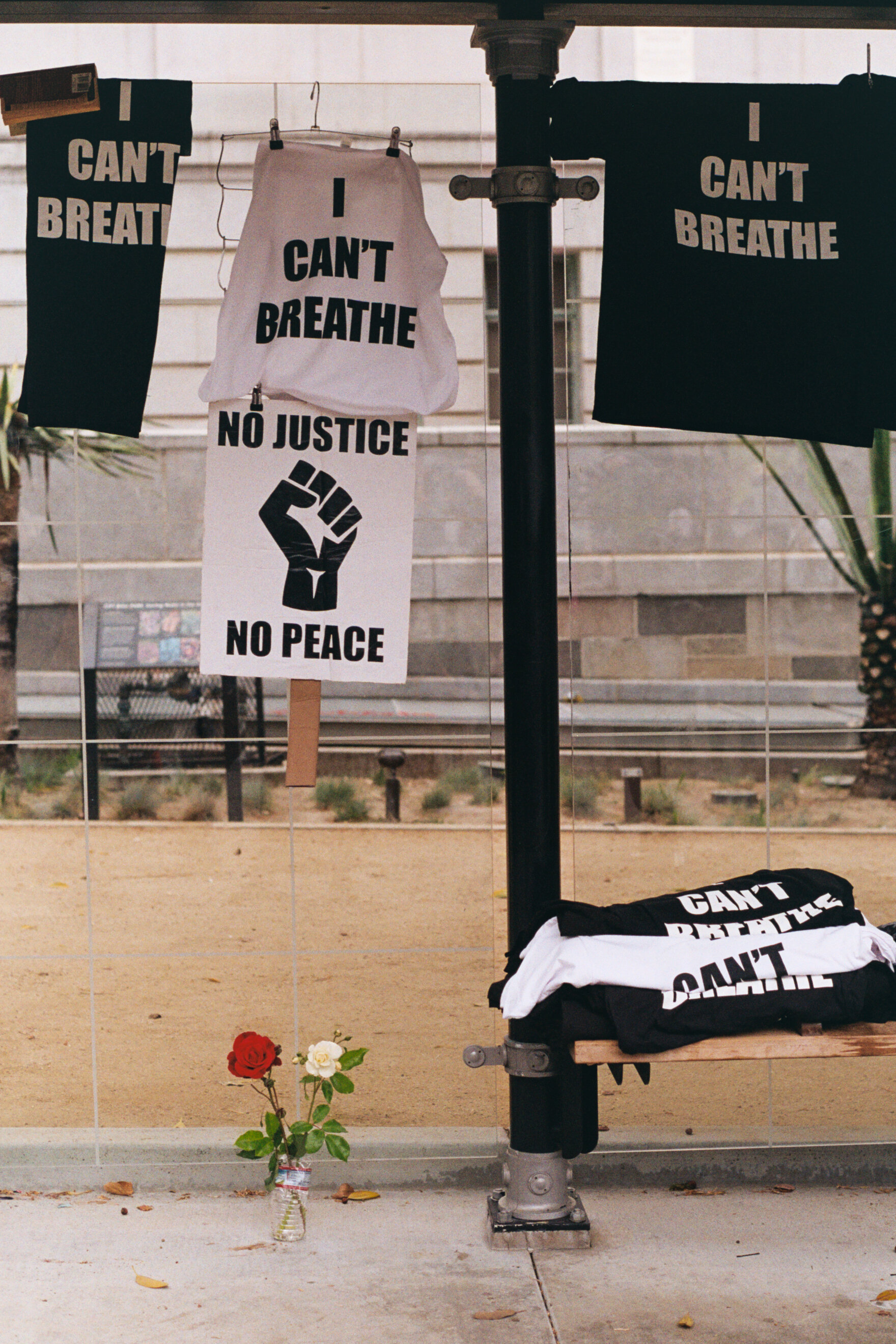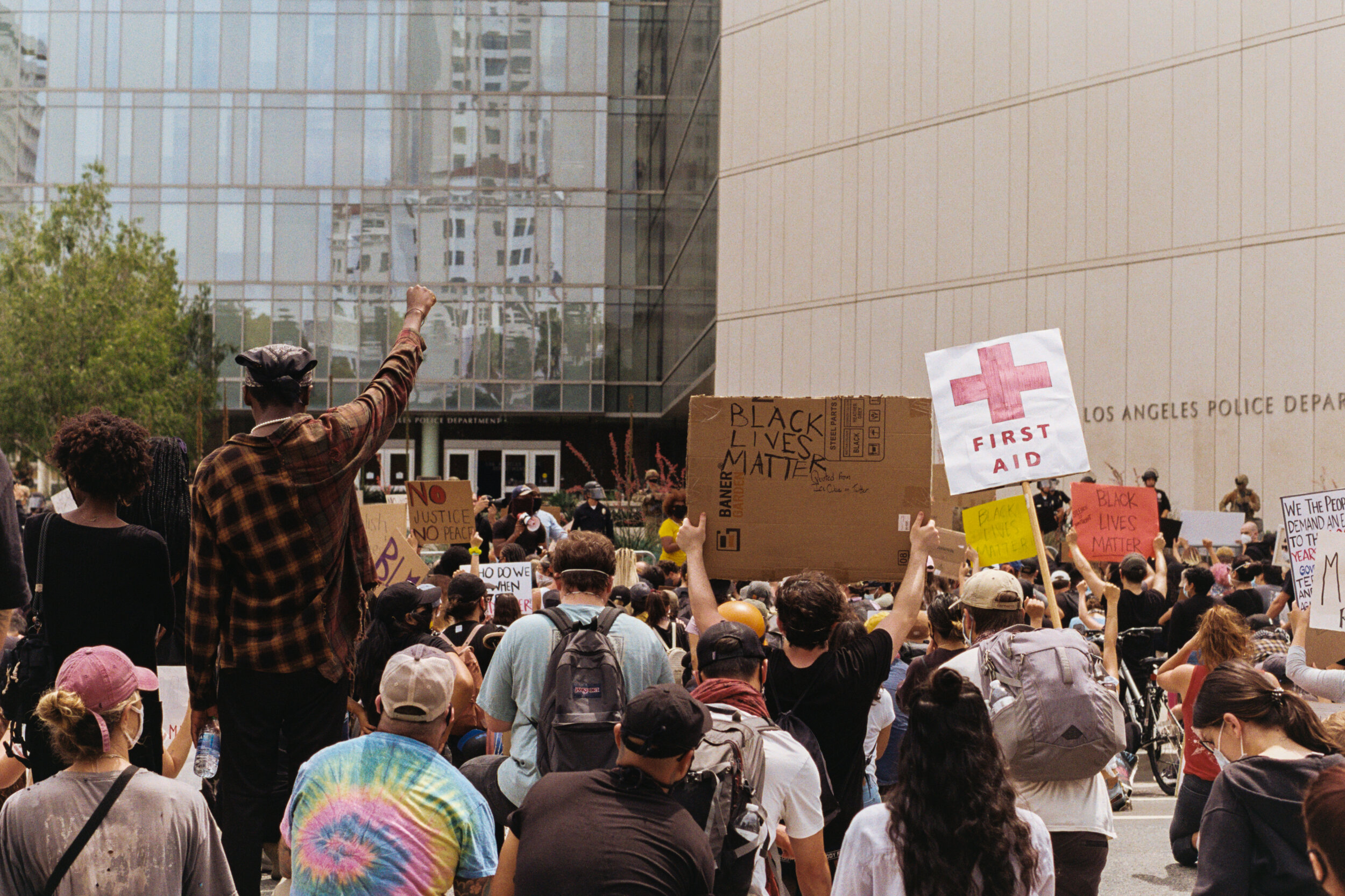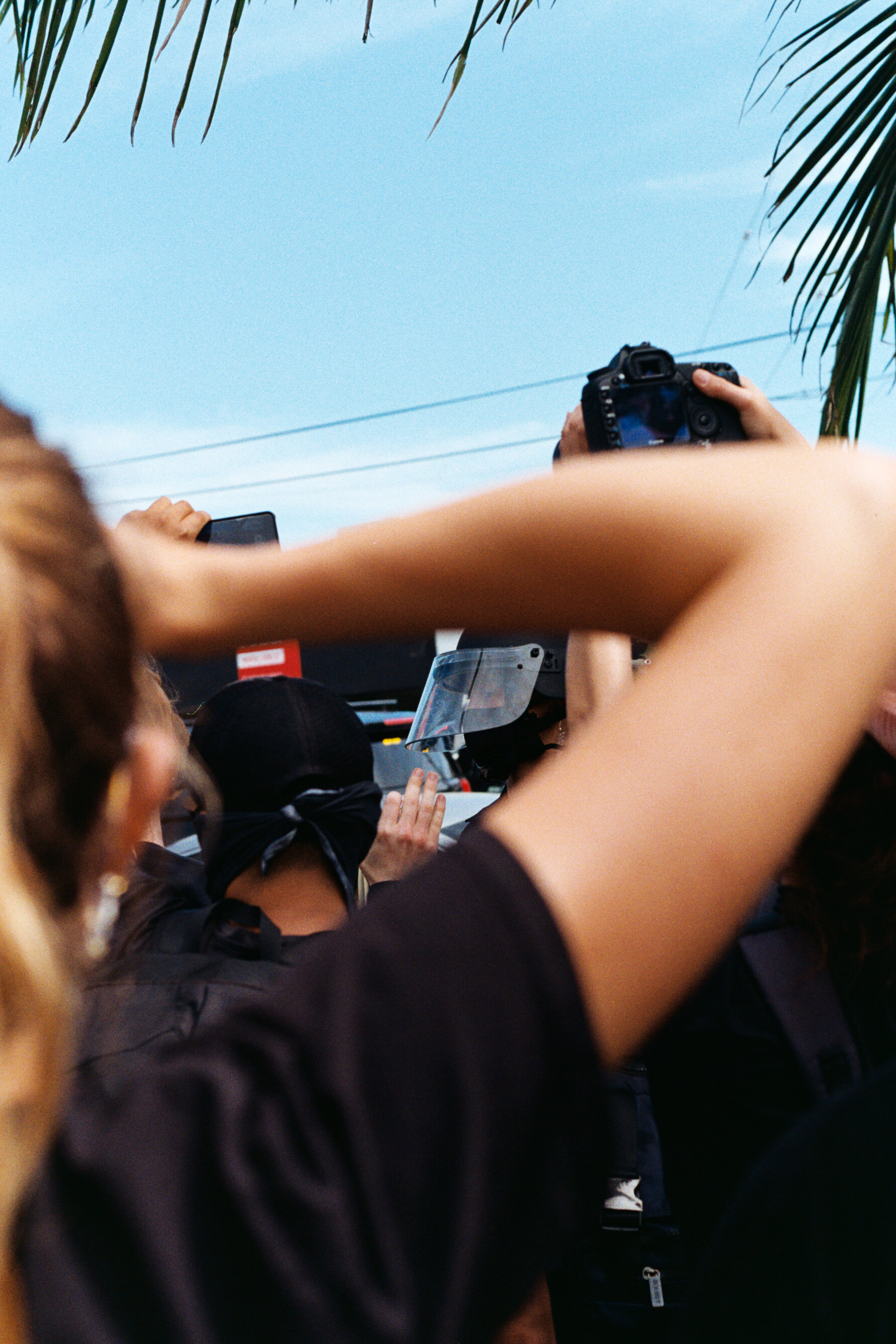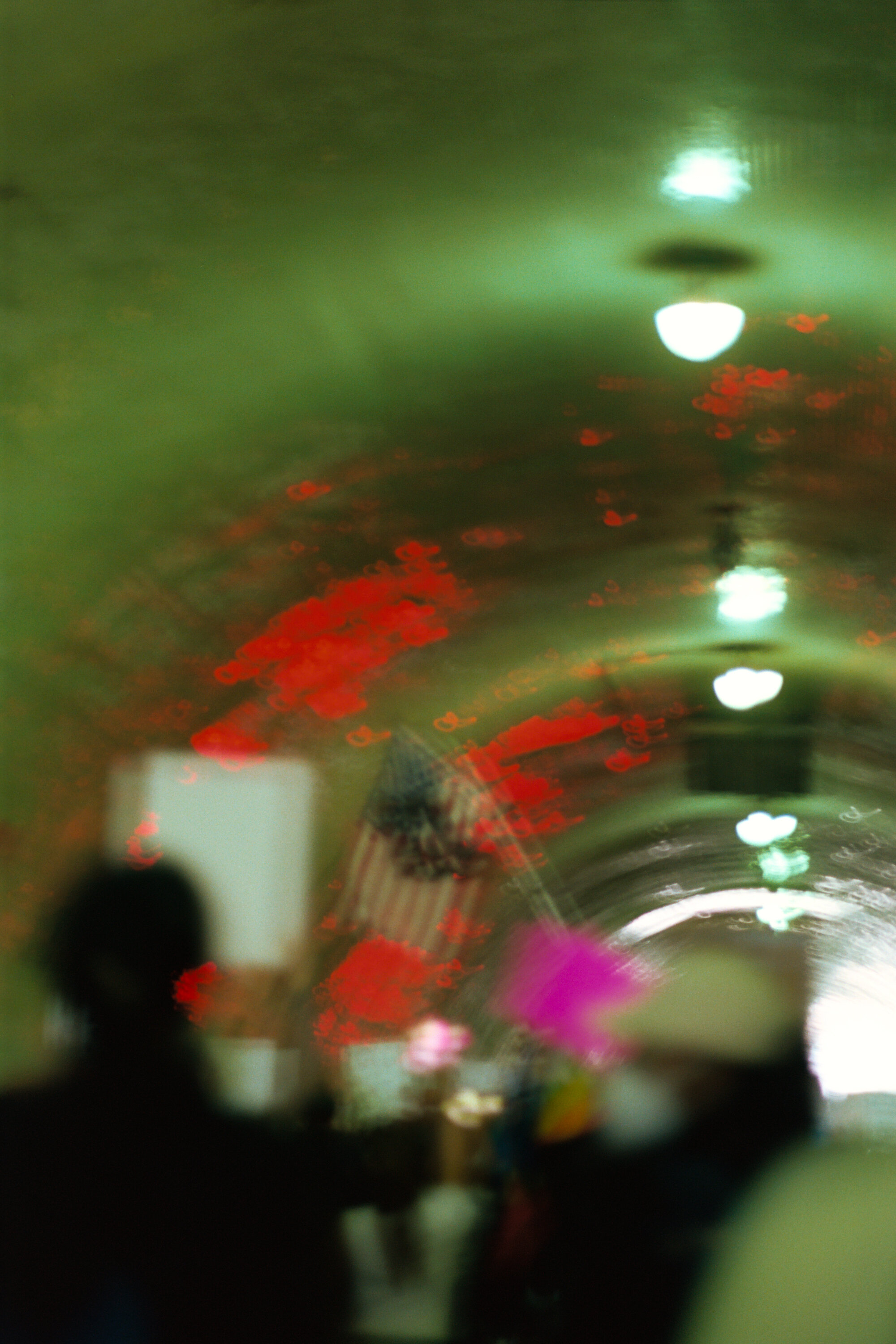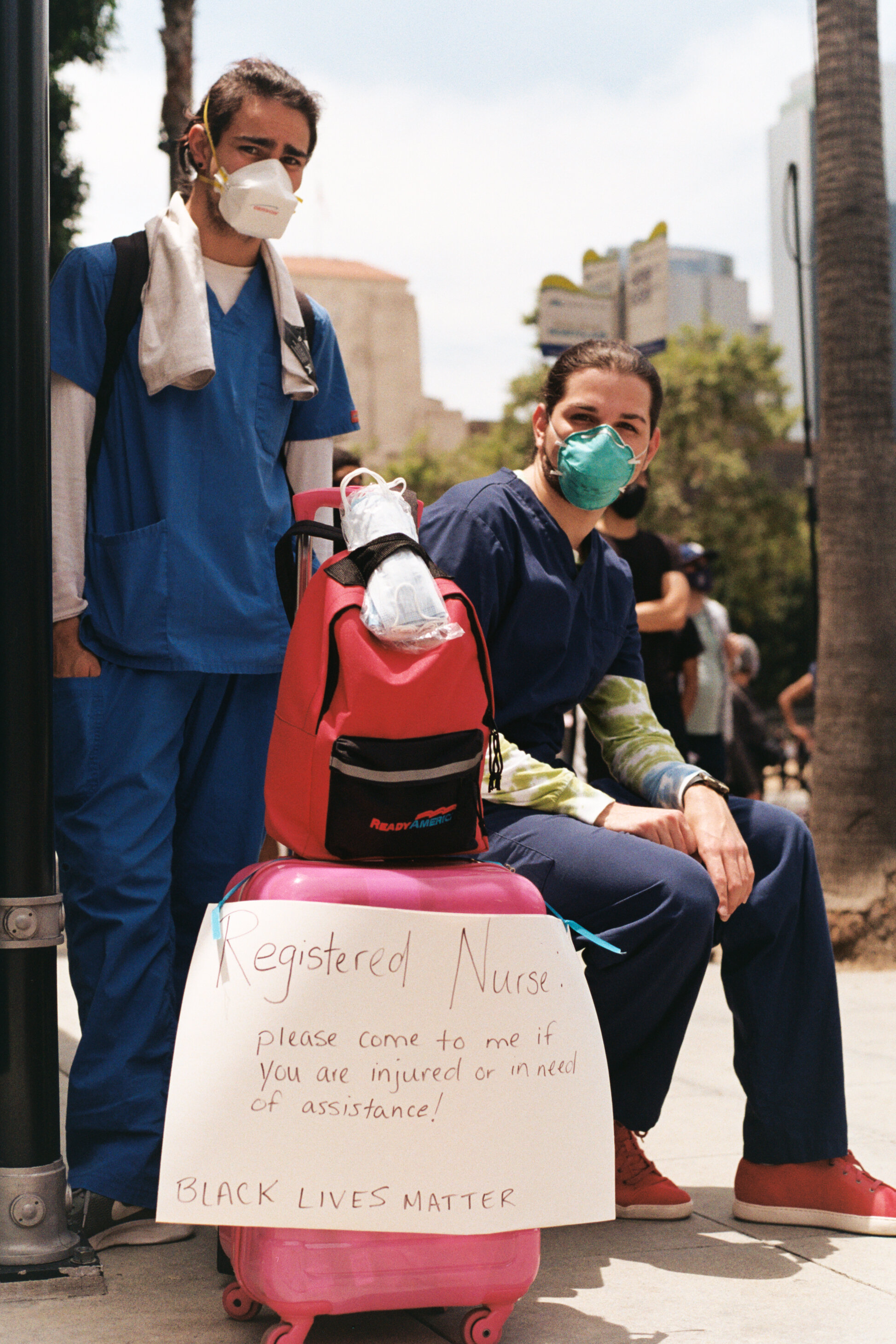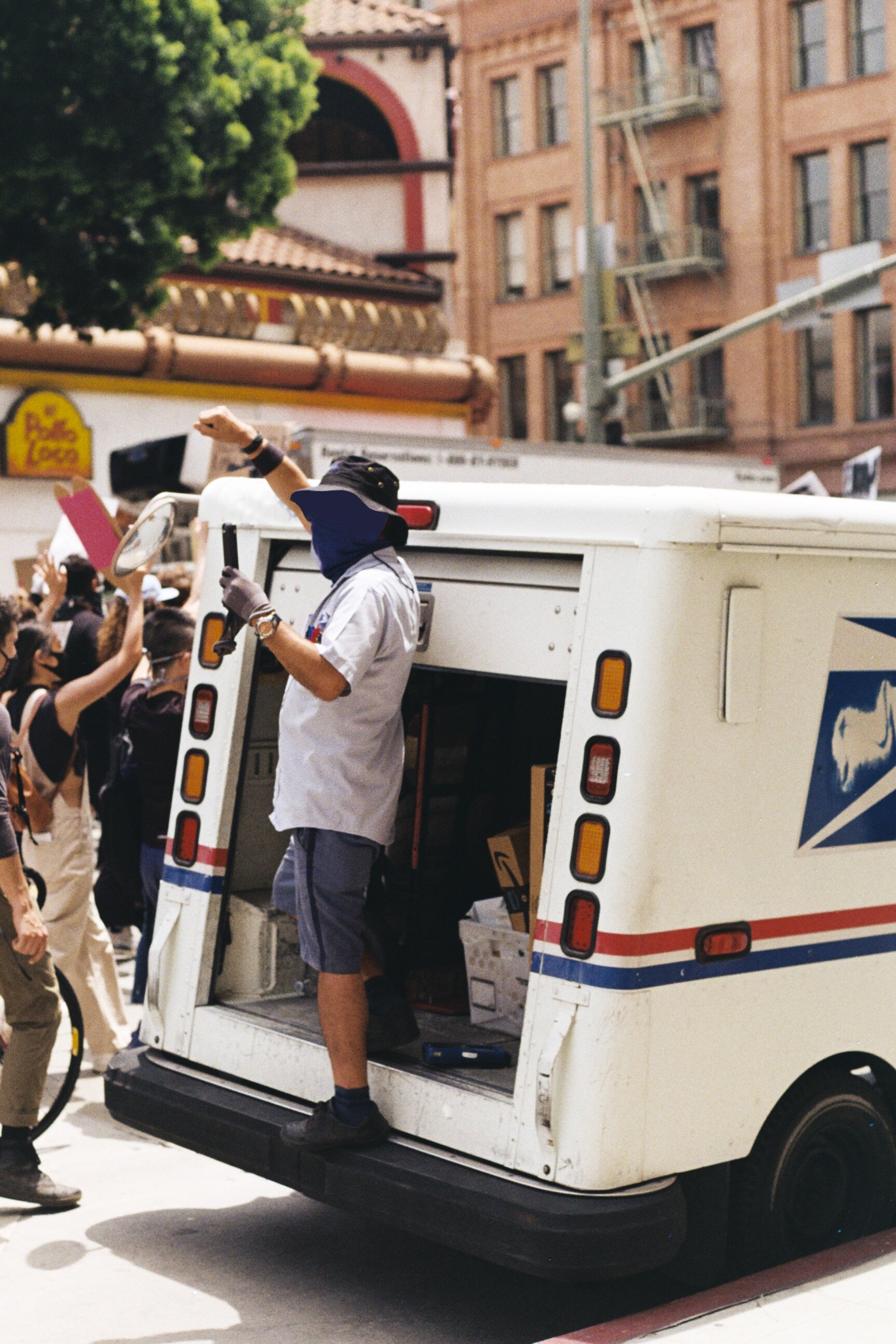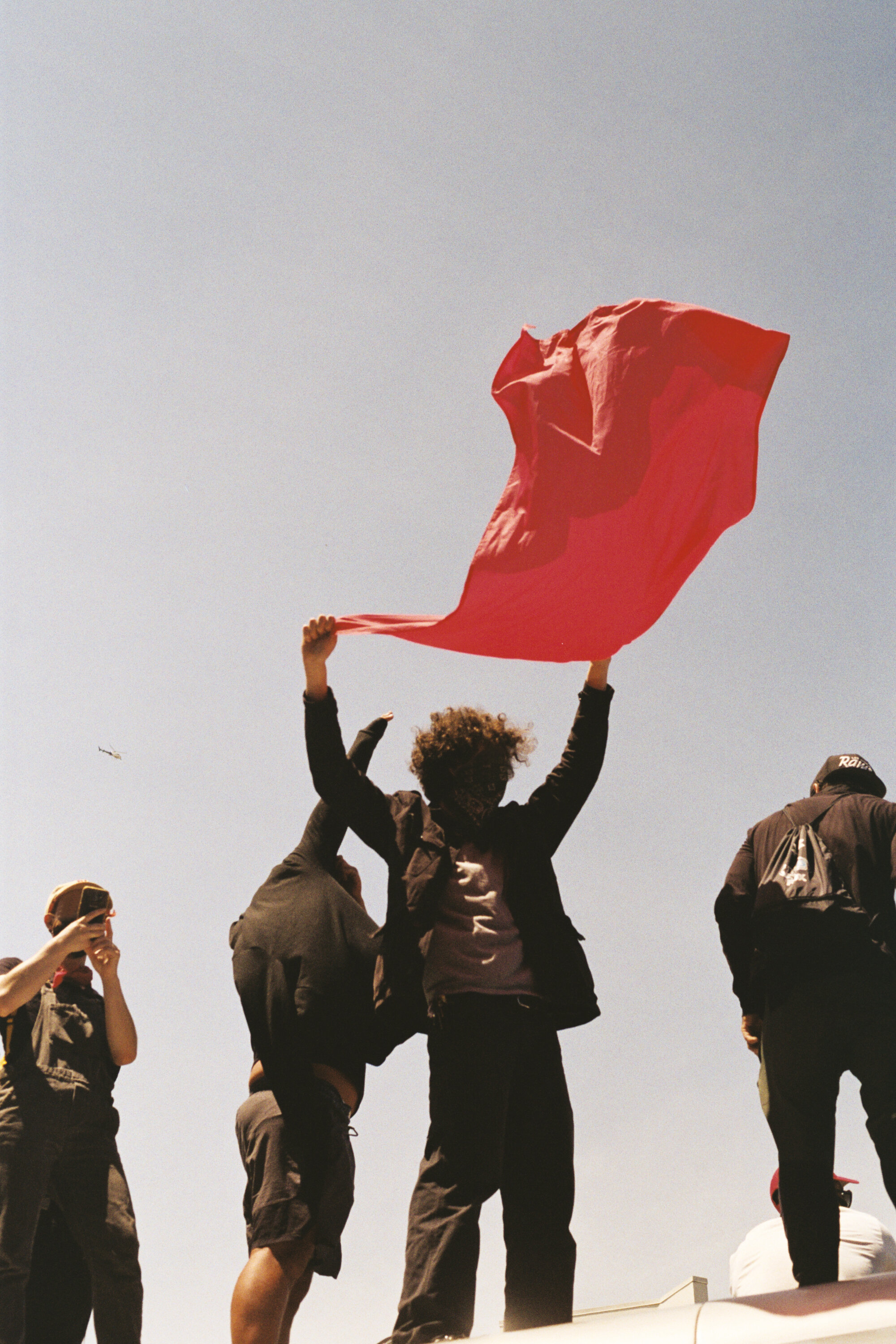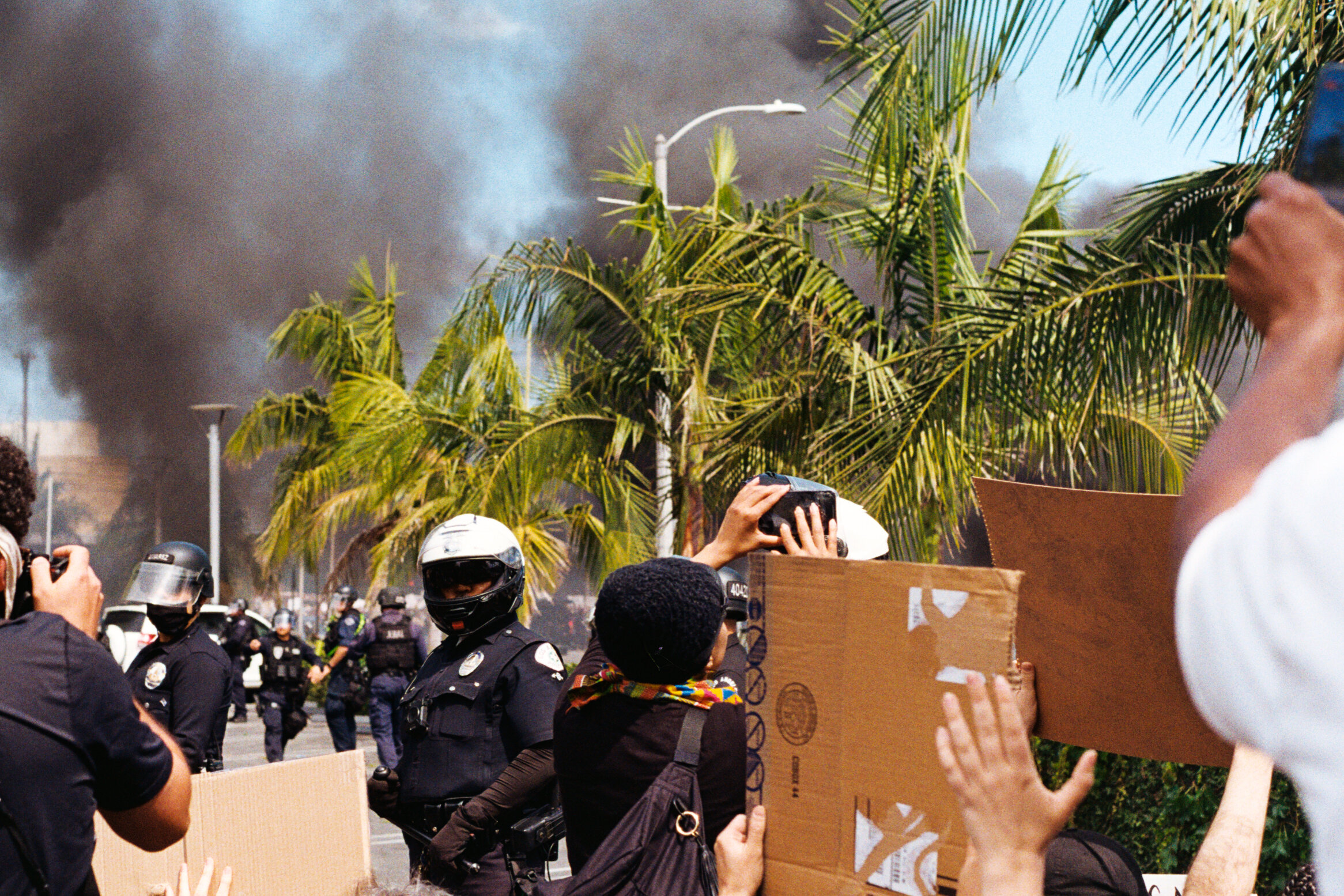IMAGES & TEXT FROM SUMMER 2020
Many questions have been arising for me as I navigate participating in and documenting these protests and this moment. I don’t think my photographs answer the questions I’m posing, but I feel they need to be accompanied by the thoughts and reflections that have been guiding me as I shoot. Videos are at the heart of the modern iteration of this movement, but what role will the photos we take now play? Photographs have inspired and spurred social change, but they’ve also curtailed change. Photography can all too easily reinforce and uphold the same oppressive power structures+systems that we are fighting against.
It feels critical to resist the urge to follow photo-tropes that we know to be dangerous:
Like relying on vulnerable/emotive/impassioned faces to create compelling images when we know the police are expanding their militarized use of surveillance and facial recognition technology. But the erasure of a face from an image can be read as violent as well. How do we take images, and acknowledge the importance of other people engaging with those images, while ensuring the safety of protestors? And why, as viewers, do we need these kinds of images to feel compelled or empathetic?
Like relying on the spectacle of violence inflicted by the state (and the very legitimate responses people have to that abuse and trauma) when that only reveals a sliver of how these protests + communities unfold and feel.
What narrative is being told and what narratives are being erased when we choose to look at and share only (or mainly) the police brutality and chaotic confrontations between protestors and police? No doubt that brutality absolutely needs to be recorded and exposed, but what about the organizing, the leadership, the mutual aid, the first aid, the care, the clean-up, and the dancing? Aren’t those also important parts of this moment? And don’t those provide a more holistic picture of who is at the forefront of the movement and what roles exist and are vital to sustain it? By not deeming those elements worthy of being photographed, what ways of imagining the future and new systems of power are being lost or ignored?
I’ve been thinking about the role of the photographer and how so often they are considered neutral figures on the sidelines of movements or conflicts, as if observation and documentation is apolitical. How often do we look at photographs and actually consider the identity of the photographer? As a white passing white/indian photographer, which moments are okay for me to photograph and which are not? I want to ensure my photographs reflect the politics I embrace and reject the ones I’m against. My intention is not to center myself, but rather acknowledge that I am not neutral, and so my photography can’t be neutral. Both the taking and reading of photographs in this time should challenge us to confront the myth of the impartial or objective photographer and photograph.
How can we confront and challenge photography’s history of objectifying, minimizing, and making spectacles out of Black and non-Black POCs? How do we photograph the state as a subject? How can we convey the feeling and energy of this particular time without adhering to the same visual language we’ve been using for a century? Lastly, how do we reconcile the vital role of images in social movements with the many moral/ethical questions and responsibilities that come with the act of photographing?
all photographs showing faces were taken with consent
